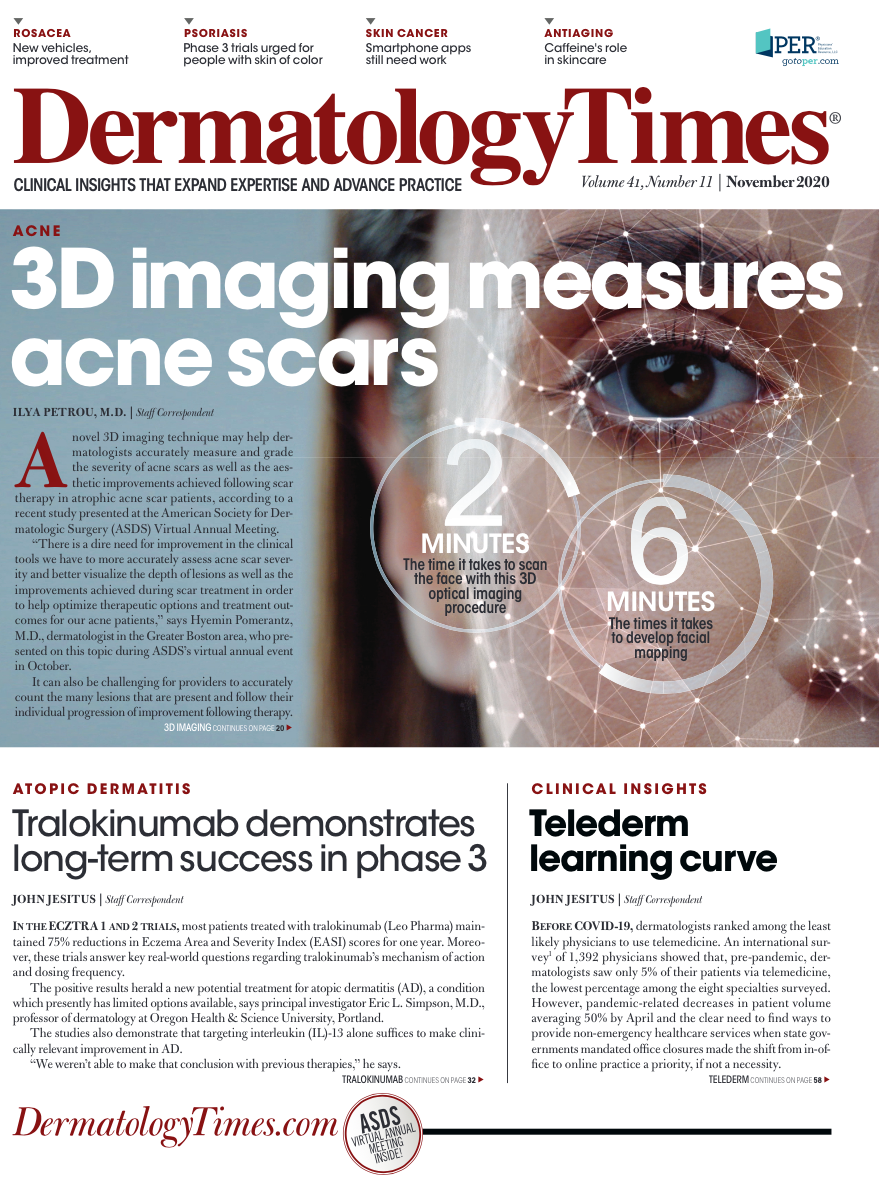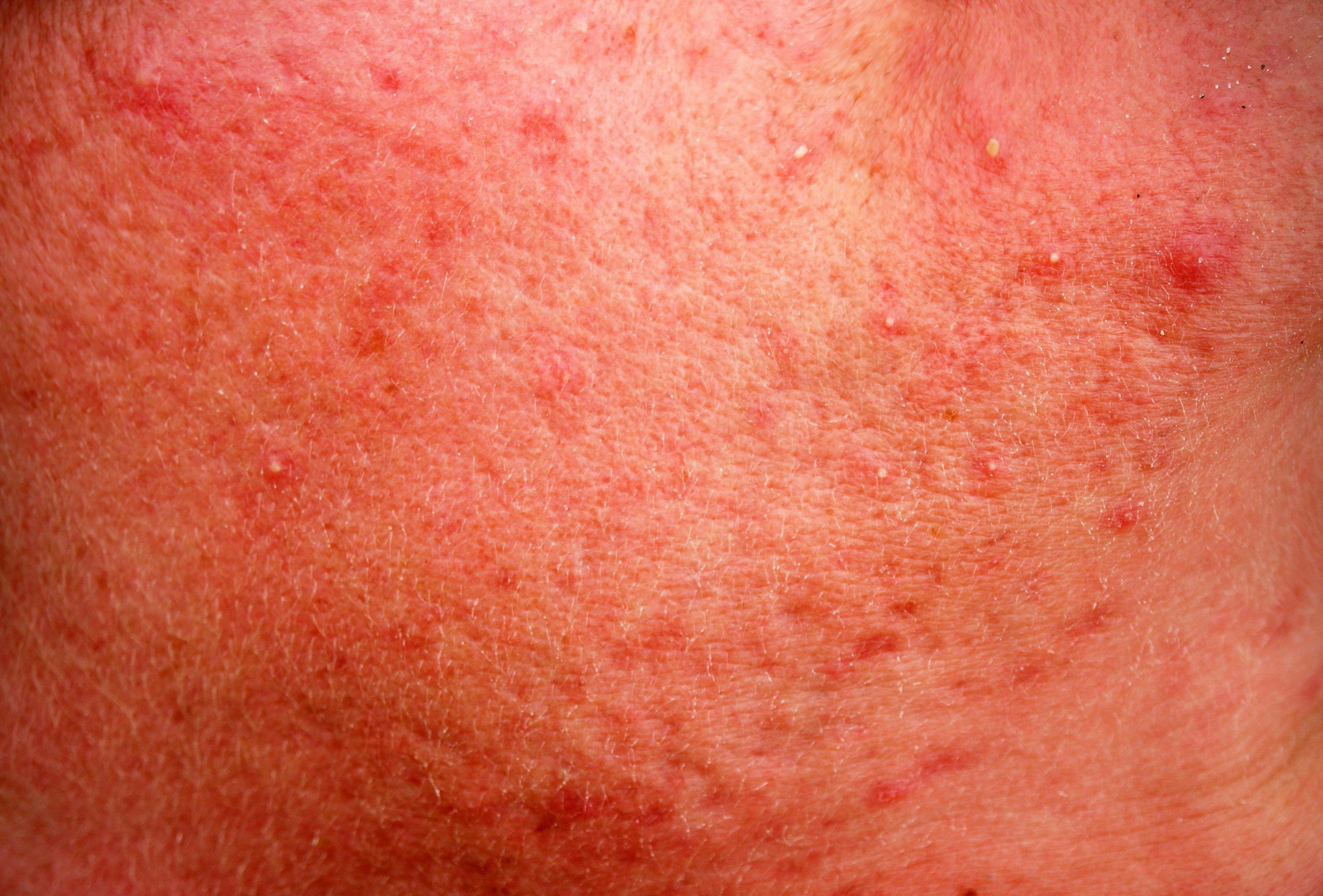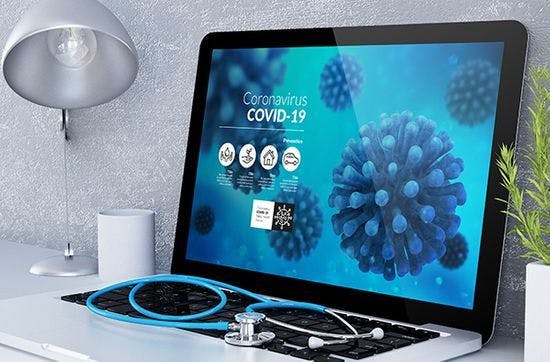- Acne
- Actinic Keratosis
- Aesthetics
- Alopecia
- Atopic Dermatitis
- Buy-and-Bill
- COVID-19
- Case-Based Roundtable
- Chronic Hand Eczema
- Chronic Spontaneous Urticaria
- Drug Watch
- Eczema
- General Dermatology
- Hidradenitis Suppurativa
- Melasma
- NP and PA
- Pediatric Dermatology
- Pigmentary Disorders
- Practice Management
- Precision Medicine and Biologics
- Prurigo Nodularis
- Psoriasis
- Psoriatic Arthritis
- Rare Disease
- Rosacea
- Skin Cancer
- Vitiligo
- Wound Care
Publication
Article
Dermatology Times
The telederm learning curve
Author(s):
Joel Schlessinger, M.D., and Adam Friedman, M.D., detail how they have adapted to teledermatology since the start of the COVID-19 pandemic.
Before COVID-19, dermatologists ranked among the least likely physicians to use telemedicine. An international survey1 of 1,392 physicians showed that, pre-pandemic, dermatologists saw only 5% of their patients via telemedicine, the lowest percentage among the eight specialties surveyed. However, pandemic-related decreases in patient volume averaging 50% by April and the clear need to find ways to provide non-emergency healthcare services when state governments mandated once closures made the shift from in-office to online practice a priority, if not a necessity.
Many dermatologists caught up quickly, learning valuable lessons along the way. At the pandemic’s peak, dermatologists saw 57% of their patients remotely, a level commensurate with that of other specialties, according to the survey.1 “Telemedicine has been a complete lifesaver,” says Joel Schlessinger, M.D. Dr. Schlessinger, an Omaha, Nebraska-based board-certified dermatologist and cosmetic surgeon and CEO of LovelySkin.
One of the drivers for that dramatic uptick came from the federal government and various insurers who began waiving restrictions on telemedicine in mid-March to encourage quick adoption by healthcare providers.
“That’s exactly what we did,” says Adam Friedman, M.D., professor and interim chair of dermatology, George Washington School of Medicine and Health Sciences. “It’s very hard to make such a pivotal change in one’s practice. But we did a pretty good job.” Schlessinger adds that, with the help of his practice’s electronic medical records (EMR) vendor, Nextech, “We were up and running for telemedicine within three days of asking them about it.”
Offering telemedicine is one thing; optimizing it is another. First, Dr. Friedman’s practice got Zoom (Zoom Video Communications) licenses for all its team members, including residents. “It was a learn-as-you-go approach. We learned a lot of simple things that enhanced the experience, ensured timeliness and got the most out of telemedicine as we went along,” he says. Initially, Dr. Friedman’s patients were reluctant. “This is something completely new to these patients — especially in certain populations who don’t have technology literacy or access to technology.”
To address that, Dr. Friedman’s schedulers use a script to help “sell” telemedicine. If a patient doesn’t understand the process, a staff member walks them through a typical telehealth appointment and explains how patient safety and information security are maintained.
Still, glitches persist. For example, when a patient schedules a telehealth visit, a staff member immediately sends a detailed email explaining how to download and use Zoom. “They’re given all the information,” Dr. Friedman says. “But we found that, when you get to the time of the visit, the patient says, ‘What’s Zoom?’”
To address that, staff members now call patients at least five minutes pre-appointment to confirm that they have the necessary information, are comfortable with the technology and are in a Zoom-friendly setting. “Lighting, location and how you hold your tablet or device can make or break the visit in terms of being able to see,” he says.
The prep call — and an illustrated best-practices patient handout — are game changers, says Dr. Friedman. “We can move very fast, instead of spending half the visit trying to get patients on Zoom.”
Granted, telemedicine cannot fully replace seeing patients in-office, say Dr. Friedman and Dr. Schlessinger.
“It took a while to become efficient in telemedicine,” says Dr. Schlessinger. “It was never as efficient as seeing the patient in the office, frankly.” For example, if the doctor identifies a suspicious mole during a telemedicine visit, the patient will need a second in-office visit for evaluation of the mole. Previously, that would have been addressed in a single appointment. The time required for this two-step process creates severe challenges for practices, says Dr. Schlessinger. Then, there’s the problem of truly “seeing” the patient virtually. “The downside of telemedicine is the clarity of the camera on most phones and computers. Unfortunately, that is truly abysmal,” he says. “We have our patients send in an actual picture of their lesion (if there is one) as well as three views of their face prior to any visit. Most patients are able to do this, and it also allows us to know that they have a modicum of digital savvy and are willing to go through a few hoops to make the appointment happen. Otherwise, we were having a huge number of no-shows or delayed visits as our patients didn’t understand that this wasn’t going to be simple.”
Now, says Dr. Schlessinger, telemedicine appointments are modestly pro table. His practice still sees five to 10 patients — such as those with acne, nonsurgical concerns or unwanted tattoos — daily this way.
Before the pandemic, all faculty were seeing patients every 15 minutes, often with double bookings, says Dr. Friedman. Depending on program year, residents saw patients every 20 or 30 minutes, also with double bookings. “With telehealth, you can’t do overbooks because you can only log into one telehealth visit at a time,” he says.
Initially, providers saw one remote patient every 30 minutes, and later every 20 minutes as comfort with the system grew. “Even though we were still able to have clinical productivity, it was a fraction of what we were pre-COVID-19.”
With loosened COVID1-9 restrictions, Dr. Friedman now sees most patients on-site, although he says he hopes telemedicine is here to stay. On average, according to the physician survey, dermatologists expect to see 12% of their patients through teledermatology post-pandemic.
For Dr. Schlessinger, telemedicine visits likely will continue at least until the pandemic ends. “While we still haven’t reached the same numbers that we were doing overall, including both medical and cosmetic, the fact that we are running at a less dense schedule and approaching parity with our monthly revenue is encouraging. I don’t see us going back to full patient volume until we have a vaccine or things are significantly better.”
Reference:
Sermo. COVID-19 HCP sentiment surveys part one: physician engagement with patients and remote/telehealth experiences. https://www.sermo.com/hcp-sentiment-study-series/. Published April 2020. Accessed October 8, 2020.
Disclosures: Drs. Friedman and Schlessinger report no relevant financial interests.

Newsletter
Like what you’re reading? Subscribe to Dermatology Times for weekly updates on therapies, innovations, and real-world practice tips.






























